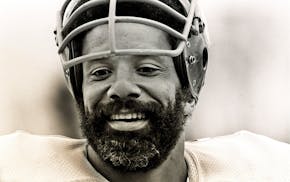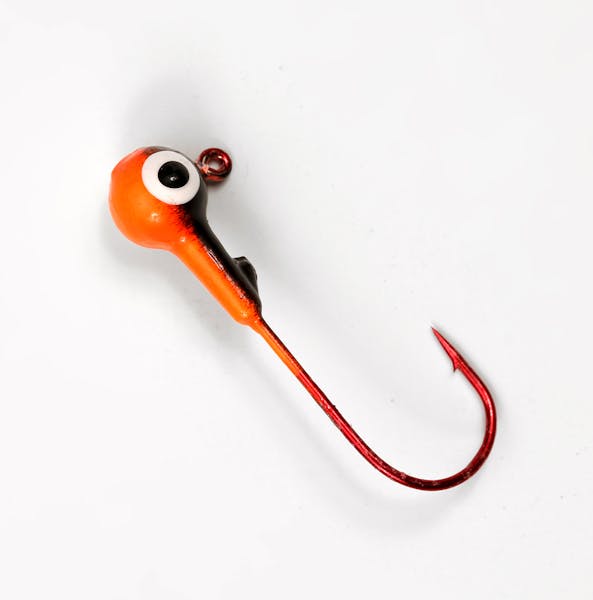Snowplows pushed ice roads to remarkable new distances last year on Lake of the Woods, accommodating what some observers see as an alarming demand for winter walleye and sauger fishing.
Should we worry about sustainability? After all, angling pressure along Minnesota's south shore is surging toward an unprecedented 3 million hours per winter.
"I think it's great,'' said Henry Drewes, the highest-ranking state fisheries biologist in the region. "It means more people are fishing.''
Upon his retirement next week as head of DNR's Northwest Region Fisheries Office in Bemidji, the detail-oriented manager will be remembered as a tireless advocate for Minnesota anglers and the lakes and rivers they fish. Affable but pointed in his communications with stakeholders — including bosses — Drewes ascended inside the DNR for 35 years while constantly urging his peers to make fishing better.
"Otherwise we are not doing our job,'' he said in an interview last week. "Whether it's walleye stocking or making new regulations, what we do should have a reasonable chance of improving success for our customers.''
Drewes, 62, knows good fishing. He grew up outside Washington, D.C., in coastal Virginia where he frequently escaped to inland waters and the Atlantic Ocean to fool species ranging from blue fish to flounder. His mother had fishing in her blood as a native of Tasmania, Australia. He mastered trotline fishing in Virginia and North Carolina. To celebrate retirement, he'll travel to Alaska's Kenai Peninsula to catch and eat sockeye salmon, coho salmon and halibut. His friends will tell you he's a bass fisherman foremost, but walleyes and bluegills are close behind.
"He's a hell of an angler. He really is,'' said ex-Minnesota Fisheries Chief Don Pereira. "His enthusiasm for it is off the charts. He's like a kid.''
Drewes' universal love of fishing sometimes led him to projects out of the limelight. Retired DNR Fisheries Chief Dirk Peterson said Drewes launched a farsighted overhaul of the Red River starting in the late 1980s. He conducted population surveys to better understand the river's long-ignored catfish. The data helped the DNR fight for the removal of fish barriers that also benefited a world-class revival of sturgeon in the river system.
"Back then it was not the glory spot to be in fisheries,'' Peterson said. "Now it's a national angling success story.''
The Northwest Region's biggest success story — collaborating with the Red Lake Band of Chippewa to bring walleye fishing back from the dead on Red Lake and Upper Red Lake — wasn't the handiwork of Drewes. But Brad Parsons, Minnesota's current fisheries chief, said Drewes was involved from the outset and nurtured an excellent, enduring working relationship between the DNR and the band.
"It's one of the most incredibly rewarding projects I could have imagined,'' Drewes said. "My part was 23 years. There were lots of naysayers, but everyone (inside the work group) was committed to bringing those lakes back.
"Future management looks absolutely rock solid on both sides.''
Parsons said Drewe's fingerprints extend beyond the northwest and his passion for the outdoors includes an intense practice of upland bird hunting with his wirehaired pointing griffon.
In statewide fishing, he laid the groundwork for an early catch-and-release season for bass and greatly improved the management of fishing tournaments to alleviate stress on fish, minimize traffic jams at access points and improve relations between tournament anglers and lakeshore property owners. To modernize DNR's recognition of state-record fish, he helped create a new catch-and-release program.
He was at the forefront of northern pike research that led to the creation of three primary northern pike fishing zones, each with an individual, goal-oriented set of regulations. Drewes also pioneered the DNR's rapidly expanding Quality Sunfish Initiative, a program that cuts bag limits on designated lakes to improve the size of bluegills.
Yet another notch in his belt was defeating antagonism from Leech Lake walleye anglers in the mid-2000s, when catch rates sank. Drewes and his team worked it out by openly sharing data with the fishing community to set new bag and slot limits for the big lake. It strengthened his populist belief in gathering citizen input to help set objectives.
"Our relationship wasn't good,'' he said. "Then we let them inside and we looked at the ins and outs of the data together … it helps build trust.''
His territory includes Cass Lake, the Alexandria area and Otter Tail County, home to more lakes than any other county in the United States. He said he'll especially miss the day-by-day work of overseeing fish-netting surveys and reviewing lake-specific management plans.
"I've read every (plan) and that's in the thousands,'' he said. "It's the heart and soul of what we do.''
Pereira said part of Drewes' charm is his reluctance to sugarcoat issues. "Henry never lost his East Coast edge,'' he said.
When the DNR recently shifted its position to support a movement at the Legislature to lower the statewide walleye bag limit from six to four, Drewes saw it as a departure from science.
"As a general conservation measure it's not a bad idea,'' Drewes said. "But it's not a good direction to go'' because it disregards research that shows the change won't improve walleye fishing.
As for worries about overfishing on Lake of the Woods, Drewes trusts the lake's carefully honed management plan. Despite the explosive growth in pressure, the harvest has remained below preset limits. Meanwhile, regulations are in place to safeguard reproduction.
When thousands of wheel houses pull onto the lake, Drewes sees good numbers of adults introducing young people to fishing. The heavy demand will make fish management a more challenging job, he said, but it ensures continued participation and investment of user fees to make fishing better.

The PWHL's growth comes with a price for a Minnesota Frost team building a potential dynasty.
What is the 'House settlement,' and what does it mean for the Gophers and NCAA?

Souhan: Anxiety and depression in the NFL helped inspire Lindsey Young's children's book

Reusse: Country boy Jim Marshall never lost his lust for life

